This post may include affiliate links. As an Amazon Associate I earn from qualifying purchases.
Chile de Arbol Salsa is a favorite at Mexican taco stands everywhere.
It’s spicy, loaded with flavor, and goes great on tacos like Tacos Gobernador and Cochinita Pibil Tacos.
Vegan, dairy-free, and ready in minutes.
Don’t worry about the heat. I’ll show you how to adjust the spice level.
This spicy chile may be small, but it has a mighty punch and adds a lot of flavor.
Choose chile de arbol pods that have no tears and are still in tact like the one in the picture above.
Bugs like to hide inside torn chile pods. Dust also collects inside dried chiles. Not good when making salsas.
Table of Contents
How Hot Do You Like Your Salsa?
- Medium hot = 20 chiles de arbol
- Hot = 30 chiles de arbol
- Super hot (will make you cry) = Add a serrano pepper or two.
How to Make It
- Roast the tomatoes and tomatillos on a dry skillet over high heat.
- For a spicier salsa, omit the tomatoes.
This combo is what gives the sauce that orange-y color. You can also add all tomatoes, or all tomatillos.
How do you make salsa less spicy?
Add more tomatoes (or more tomatillos) for a mild salsa. Or, add ¼ cup of tomato sauce.
How do you make salsa hotter?
Add more chile and less tomatoes (or tomatillos) for a spicy Mexican salsa.
- Char the fresh tomatoes and tomatillos for 3-4 minutes. The sides should be black.
- Add the onion and garlic.
The roasting will give your salsa a smokey flavor.
Note: You can also boil the tomatoes, tomatillos, onion, and garlic.
Pro Tip:
Line the skillet or sheet pan with foil paper for easy clean up.
To Roast in the Oven:
- Place the tomatoes and tomatillos on a baking sheet.
- Add oil and salt.
- Toss to combine.
- Place under the broiler for 5 minutes.
- Add the onion and garlic.
- Broil for 3 more minutes. The skins on tomatoes and tomatillos will have turned black.
- In a clean skillet, heat the oil.
- You can do this in the same skillet you roasted the tomatoes and tomatillos, but be sure to clean it before you get started.
This amazing salsa is slightly different from other salsa recipes in that it uses dried Mexican chiles.
Here, I’m using olive oil, but you can also use canola oil, avocado oil, or sunflower oil.
- Next, add all the arbol chiles.
- This will take no more than 1-2 minutes.
If they burn, the chile will be bitter. Bitter is not better.
When you do this, the room can get smokey. Open the windows … and most importantly … don’t touch your eyes!
If this is your first time working with chiles, use gloves or tongs.
The chile de arbol pepper is almost as hot as habanero. See where they rank on the Scoville Scale.
- To a blender, add all the chile de arbol.
- Also add as much of the oil as you can get from the pan.
The oil adds a smooth, silky texture to the salsa.
- Add the roasted tomatoes, tomatillos, onion, and garlic to the blender.
- The tomatoes and the tomatillos will make this salsa liquid and not very chunky.
You can also do this in a molcajete. You can see how to use this traditional Mexican cooking tool in the video for Tomato Molcajete Salsa.
You can’t forget the salt. Blend then taste. If it needs more salt, then add more salt.
Substitutions:
What can I substitute for chile de arbol?
Cayenne pepper and red pepper are good substitutes for arbol chile pepper.
- Add ¼ cup water.
- Blend for a smoother salsa.
Only add enough water as you need to blend everything. For a chunkier salsa, use a food processor.
You can also use vegetable broth or chicken broth for another layer of flavor.
- Let the sauce cool before tasting.
- It is always spicier when it is still warm.
You will see this deliciousness at taco stands next to Mexican Pickled Onions, Chiles Toreados, and sometimes next to a row of hot sauce containers.
Another name for this salsa taquera is “Salsa de Arbol” or “Arbol Salsa.”
This Chile de Arbol Salsa recipe is a favorite in the Mexican cuisine.
Try it on tacos, gorditas, pork tamales, and more. Or just with tortilla chips for a slightly addictive appetizer. Buen provecho!
Hungry for More?
Be sure to subscribe to my newsletter and follow along on Facebook, Instagram, Pinterest, YouTube for my latest recipes and videos.
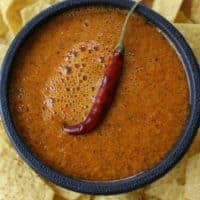
Chile de Arbol Salsa
Ingredients
- 2 tomatoes
- 2 tomatillos
- ¼ onion
- 1 garlic
- 1 tablespoon olive oil
- 1 cup dried chile de arbol stems removed
- ½ tablespoon salt
- ¼ cup water
Instructions
- In a skillet, char tomatoes and tomatillos on all sides.
- Halfway through the charring of the tomatoes and tomatillos, add onion and garlic to the skillet.
- Cook for 2 minutes.
- Remove garlic.
- Let everything cook for 1-2 minutes more, or until onion is translucent.
- With your spatula, move the tomatoes and tomatillos on their sides, making sure they char on all sides.
- Remove everything from the skillet and set aside until ready to use.
- In a clean skillet, add oil and dried chile de arbol. If you like it spicier, add more chile.
- Cook for 1 minute, stirring constantly. Do not let the chiles burn, or the salsa will be bitter.
- Place all the chile de arbol and as much of the oil from the skillet in a blender.
- Add the tomatoes, tomatillos, onion, garlic, salt, and water to the blender.
- Blend until smooth.
- Pour into a salsa bowl. Enjoy!
Video
Notes
- How do you make a salsa less spicy? Add more tomatoes (or more tomatillos).
- How do you make salsa hotter? Add more chile and less tomatoes (or tomatillos).




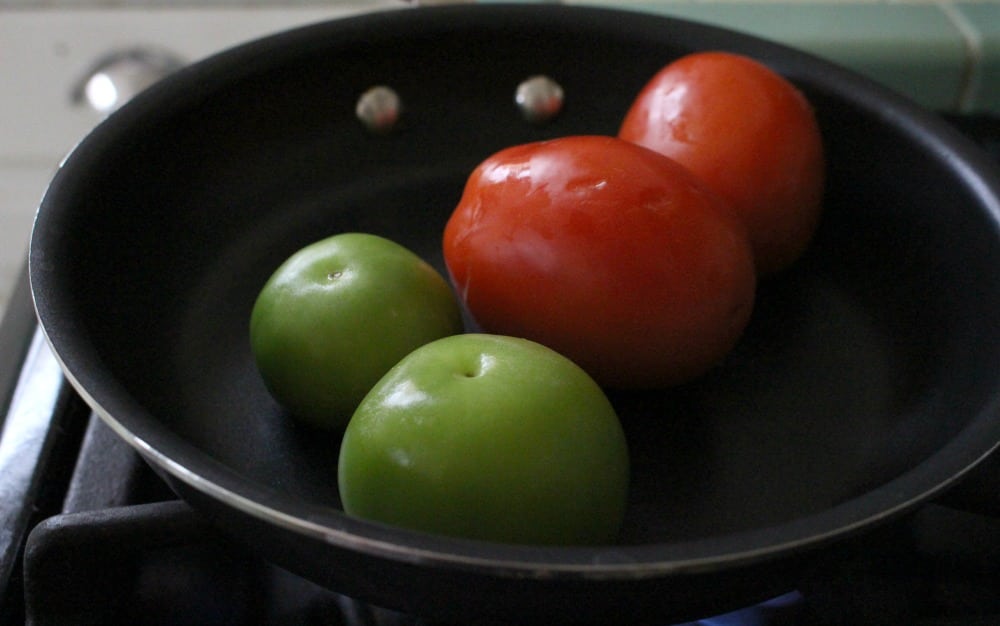

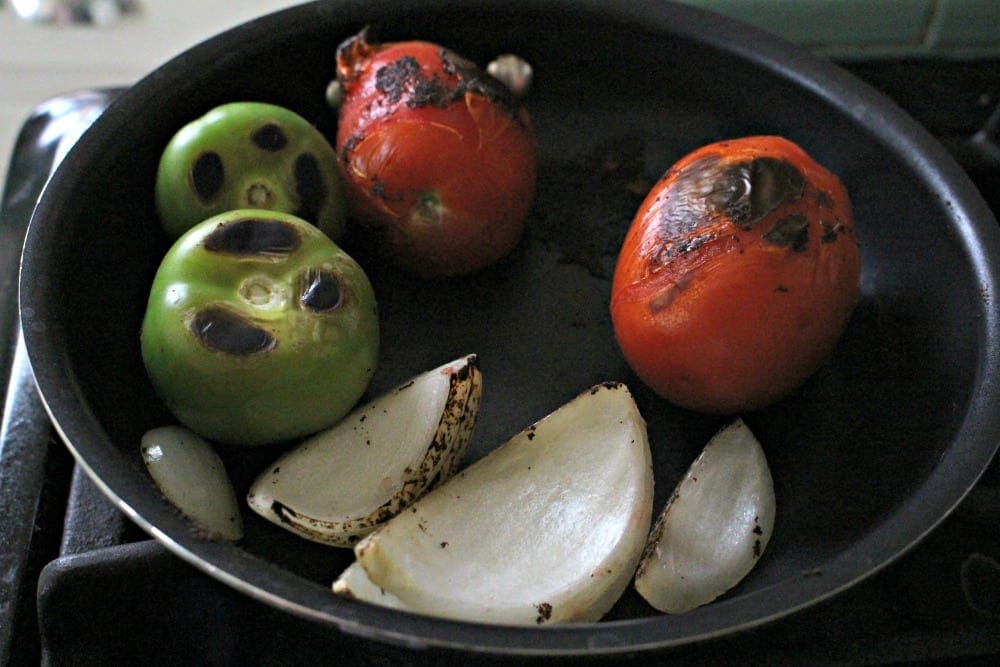

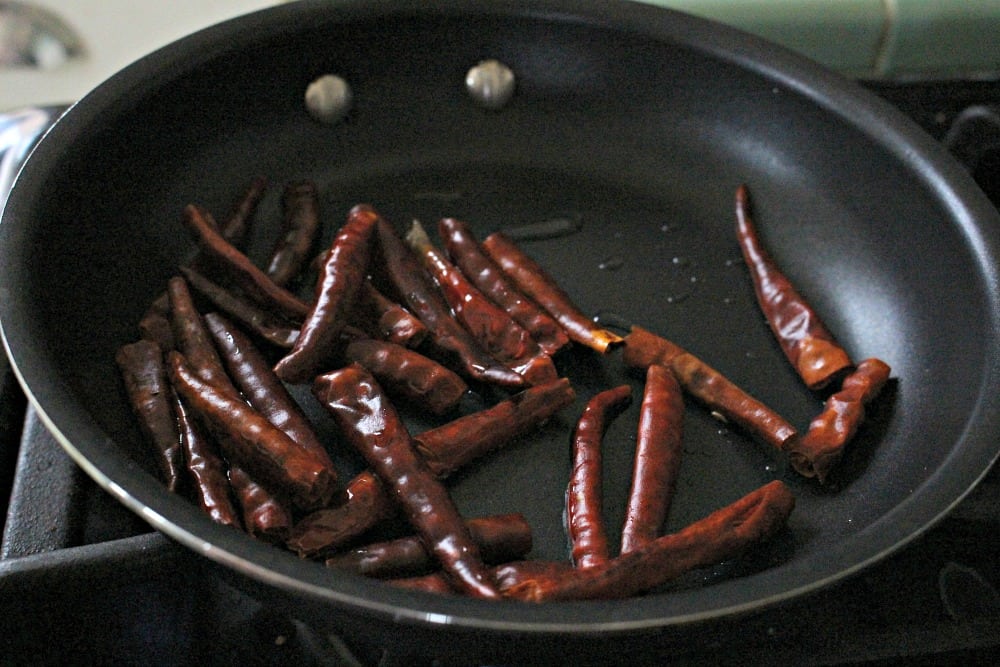
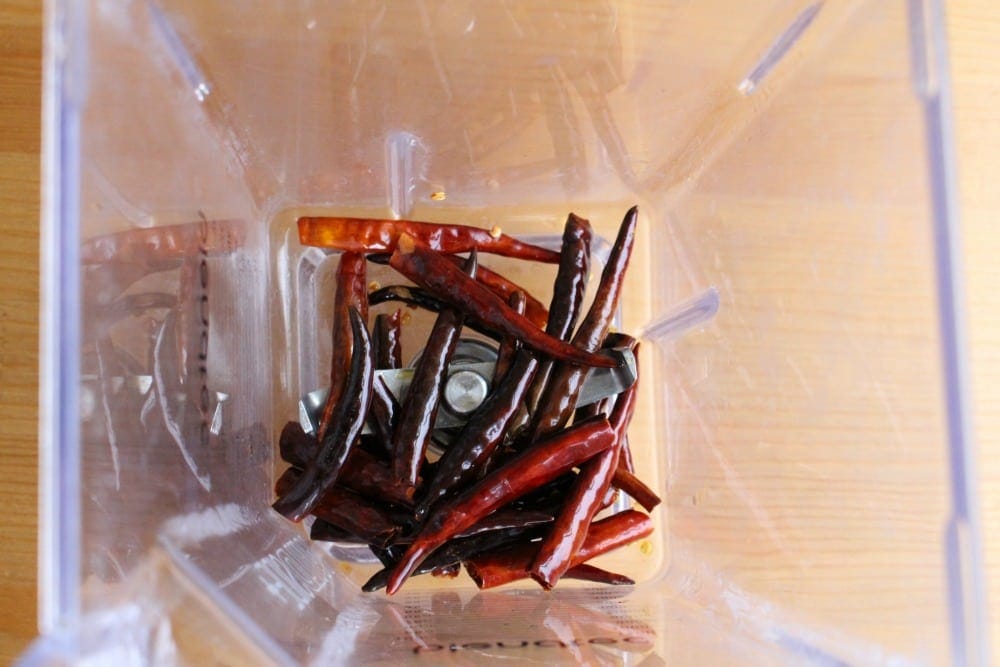
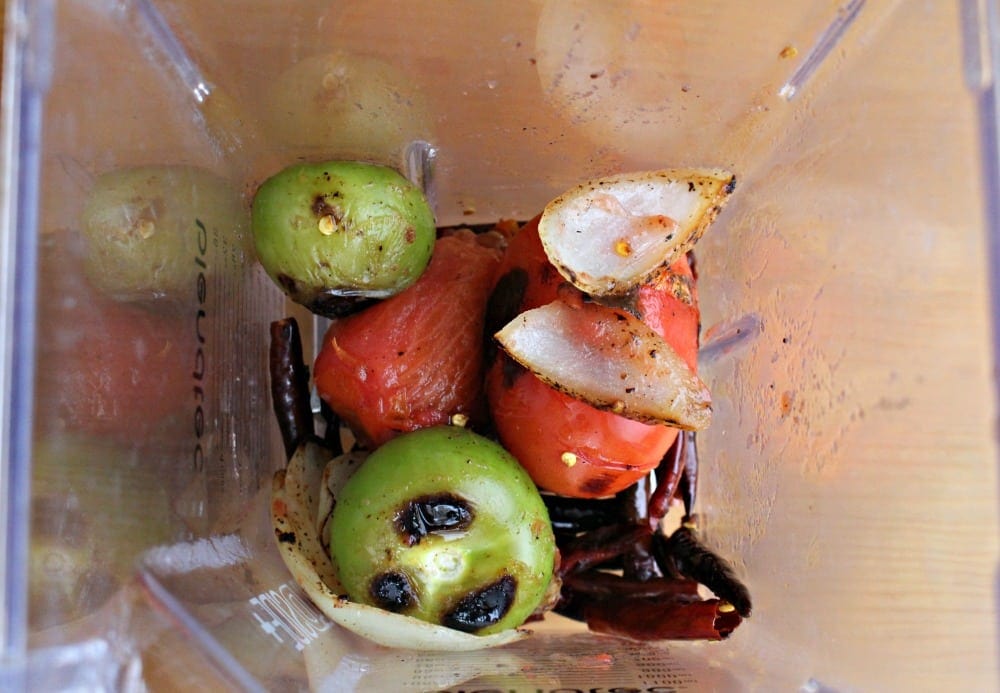
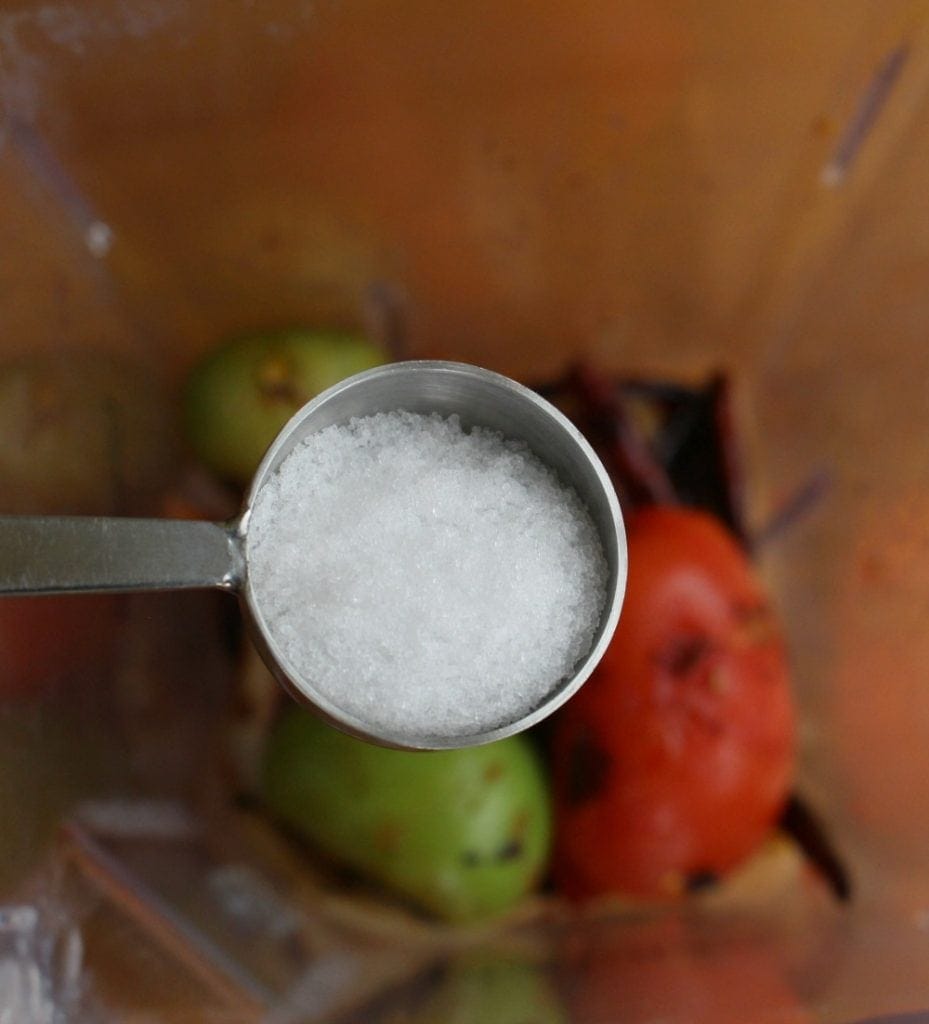
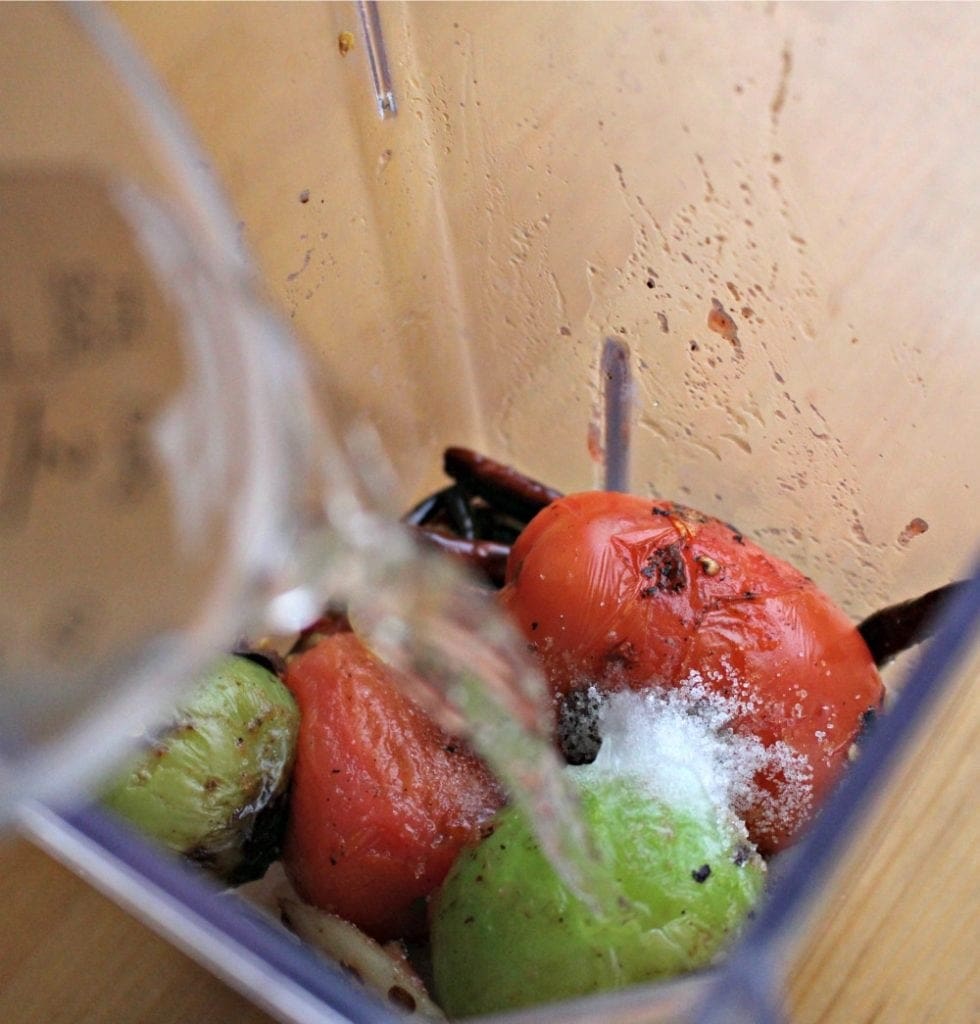
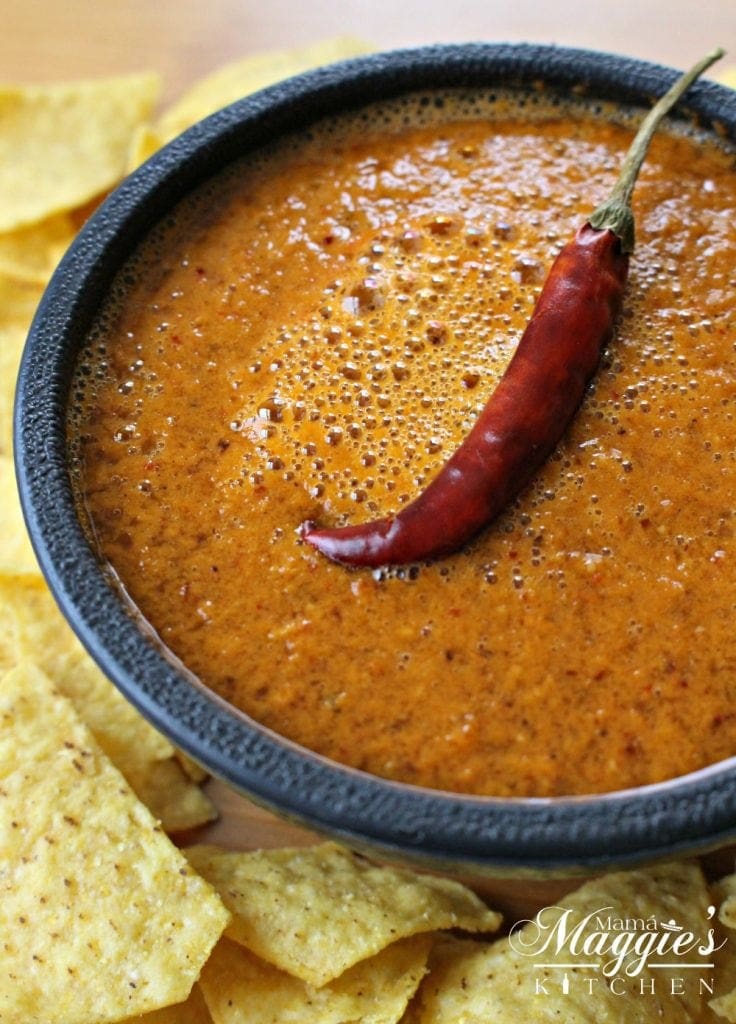
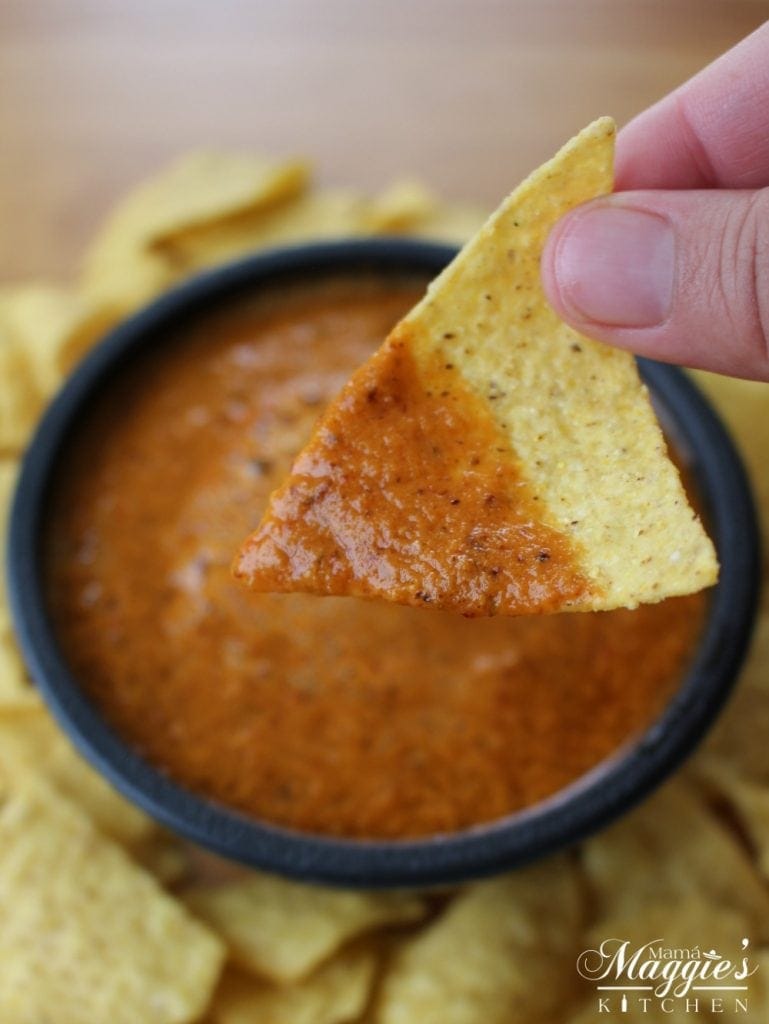
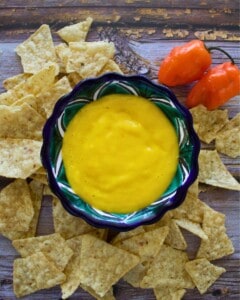
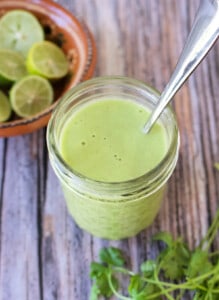

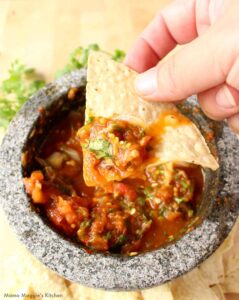
Super easy and I added a little extra chiles for that extra kick for the pozole (your recipe as well).
That’s a great way to adjust this recipe.
I am growing chili de arbol peppers. Do I need to dry them for this salsa or what do you recommend?
My Tios, my Uncle Joe & Aunt Mona, used to make this salsa and use a comal. As they got older, they had to take the comal outside . They always made a lot for freezing ,for parties, and my tio just passed away at 102. He was known for his salsa de arbol. thanks for the recipe. I never thought about making it but I will , in his memory.
Little Mexican restaurant by our house has not-so-great food, but these little containers of red and green salsa that I am basically addicted to! I finally asked him what was in the red salsa. He said “Just chile de Arbol and water”. I’ve tried a million times to roast those chiles and blend with water and it is NOT the same. I think you’ve solved the mystery….no more yucky Mexican food just to get their salsa anymore! Huge High Five ♥
This was different, my husband and I both felt that it had a decidedly “Asian” taste at the beginning. I believe I have seen these peppers in General’s Chicken and other dishes. I’m wondering if I toasted them too long since this taste was pretty distinct.
Now that’s interesting! They have a lot of chiles in the Asian cuisine. I have several Asian readers and people from India too.